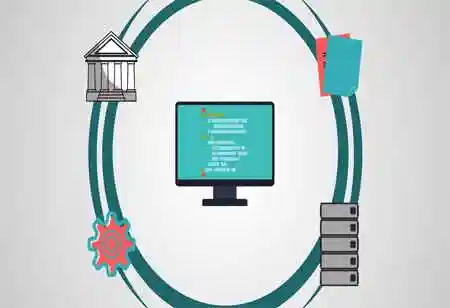THANK YOU FOR SUBSCRIBING
Need of Application Lifecycle Management for Cloud
ALM orchestrates software delivery and operations. It offers integrated methods and tools for managing an application's whole life cycle, from demand to design, development, testing, deployment, and operations and support

By
Apac CIOOutlook | Friday, August 06, 2021
Stay ahead of the industry with exclusive feature stories on the top companies, expert insights and the latest news delivered straight to your inbox. Subscribe today.
ALM orchestrates software delivery and operations. It offers integrated methods and tools for managing an application's whole life cycle, from demand to design, development, testing, deployment, and operations and support.
FREMONT, CA: An increasing number of businesses is adopting cloud software. They recognize the advantages of cloud deployments in terms of cost and ease, the possibilities enabled by always-updated software, and the security and stability of high-performance data centers.
However, getting the most out of a cloud technology investment necessitates focusing on an area that may not be obvious to all businesses: Application Lifecycle Management (ALM). One may be familiar with the ALM feature in on-premise applications. ALM orchestrates software delivery and operations. It offers integrated methods and tools for managing an application's whole life cycle, from demand to design, development, testing, deployment, and operations and support. Contrary to popular belief, cloud providers do not automatically handle these activities, and software licenses do not cover them. ALM should be applied to cloud software as well—and this is something one must take responsibility for. Here is why.
Managing a Dynamic Environment
The benefits of cloud software include instant access, ease of use, and automated upgrades. Many people mistakenly believe that once the software is moved to the cloud, they would be free of all lifecycle management chores. This is not correct. Companies must continue to manage the integration of various software solutions actively and oversee business processes and test functional cloud upgrades, at the very least.
For example, in the cloud, the provider is in charge of the technology that enables cloud deployment. However, if a company sends out invoices for all deliveries, the cloud solution provider does not monitor those invoices. This is a problem of business process management, not technology. The same may be said for the functional updates that a cloud provider regularly does. The cloud provider is testing these upgrades for technical correctness, not assisting the customer's business. The consumer is still responsible for this check. Monitoring integrations is another lifecycle management task. Each cloud provider ensures that the solution is self-contained. When data is transmitted between on-premise or cloud products, the customer must ensure that the overall business solution functions properly.
Specific lifecycle responsibilities are still relevant in the digital world, as evidenced by these instances. As a result, SAP has added the SAP Cloud ALM solution to its ALM portfolio. SAP has provided the following services:
SAP Solution Manager is a lifecycle management tool for on-premise and hybrid SAP systems in large enterprises. SAP Enterprise Support services include SAP Solution Manager. SAP Cloud ALM is included in the cloud subscription to satisfy the application lifecycle needs of enterprises that use cloud solutions from SAP Cloud ALM.
See Also:Top 10 Intelligent Transportation Tech Solution Companies





